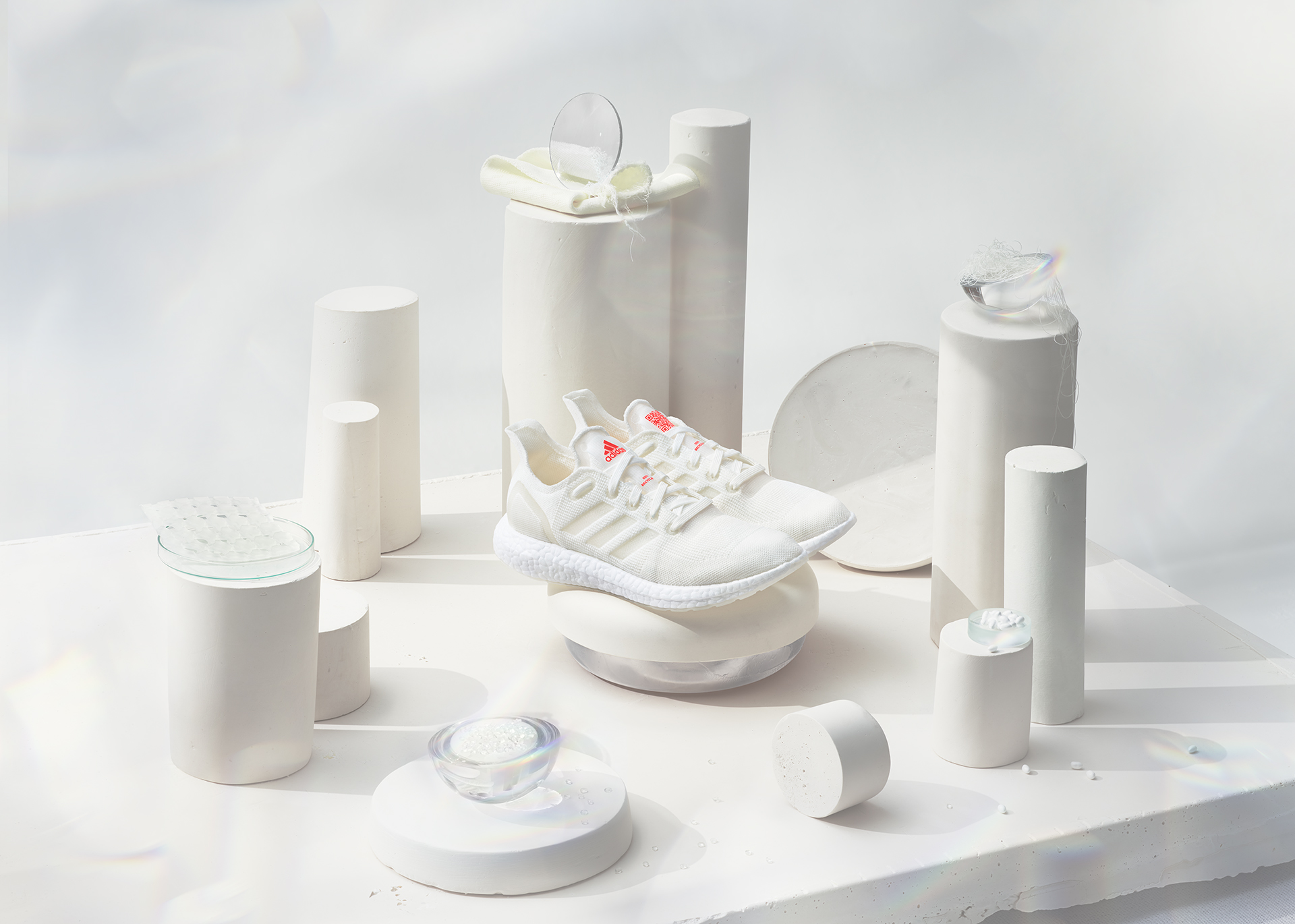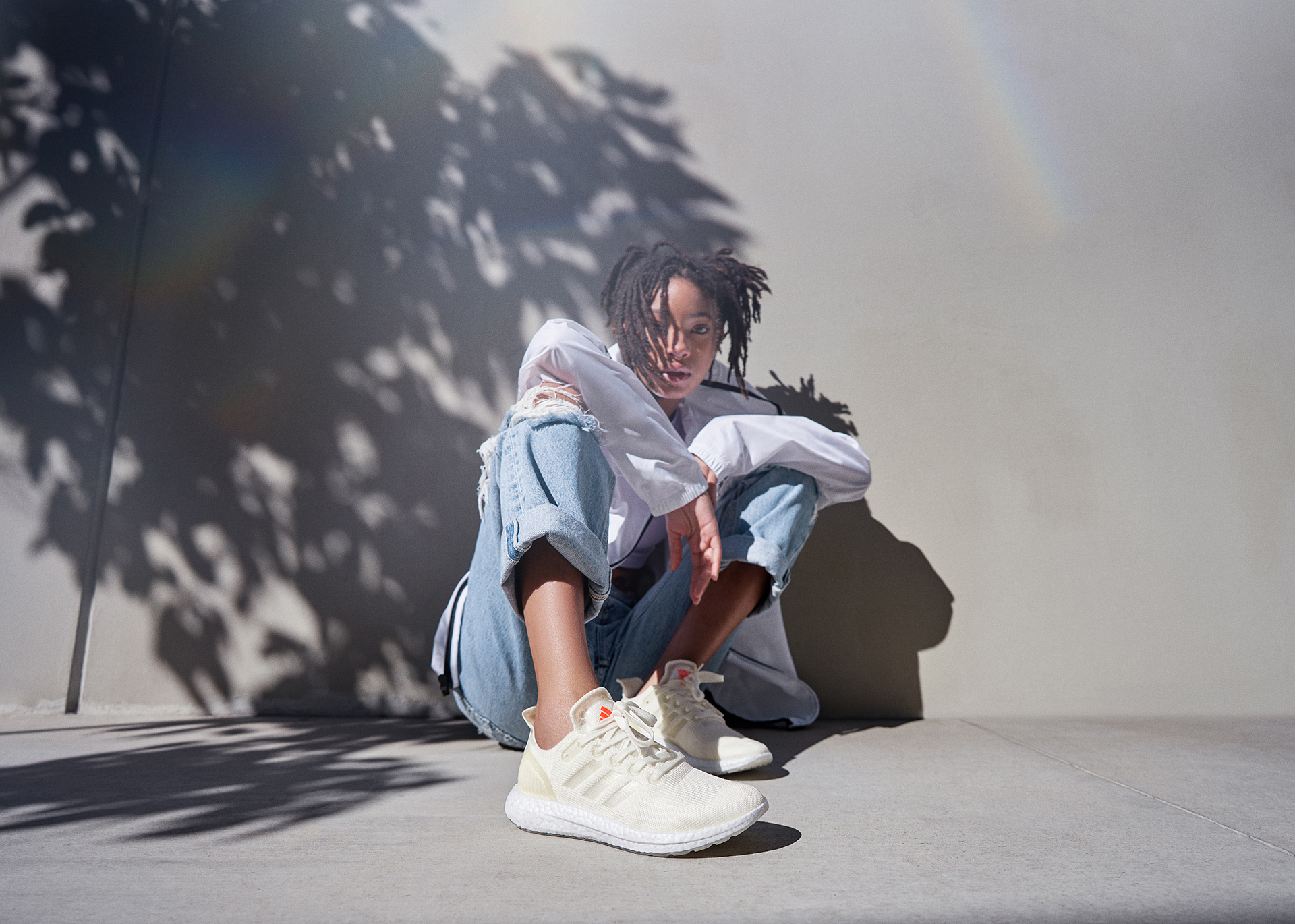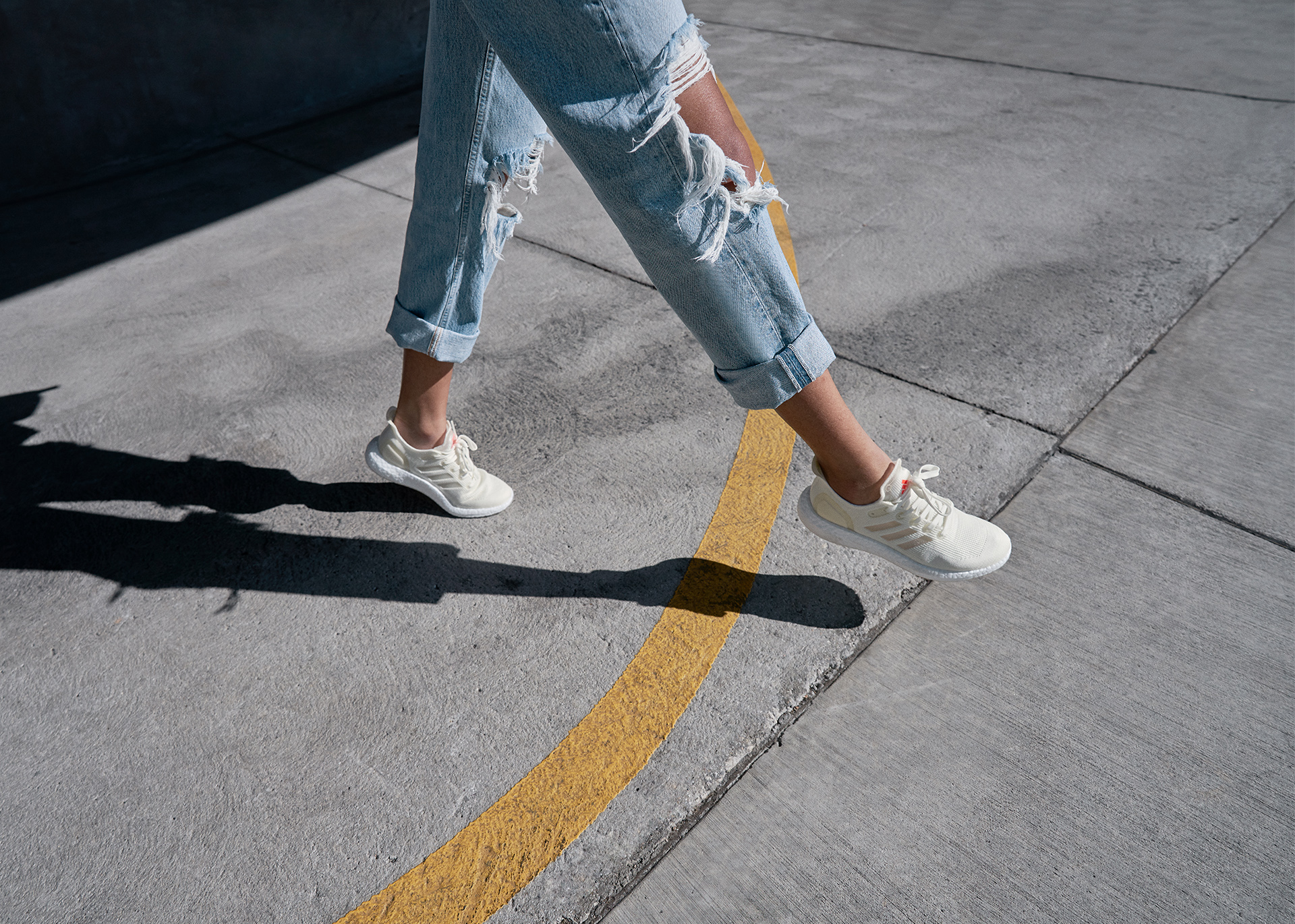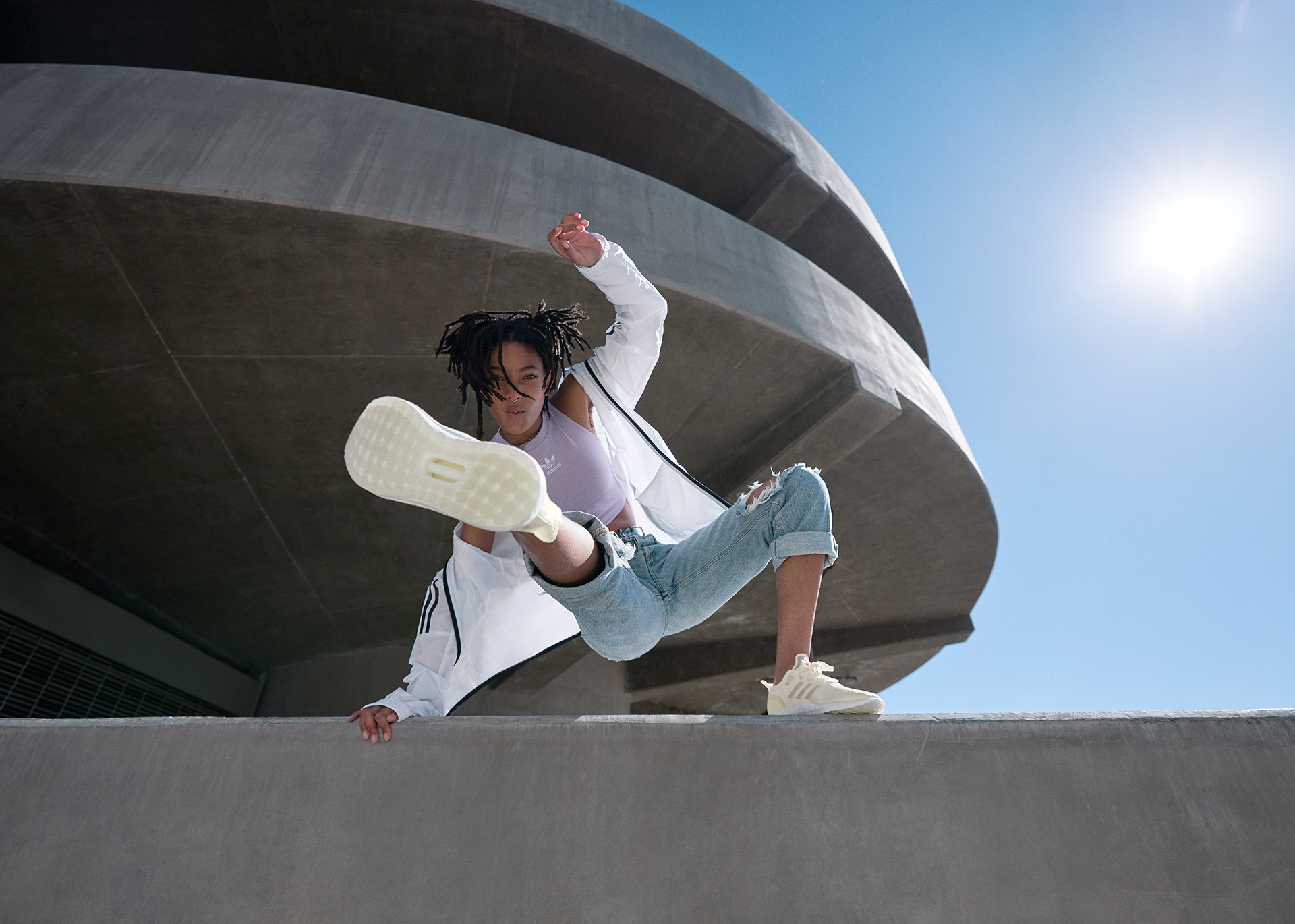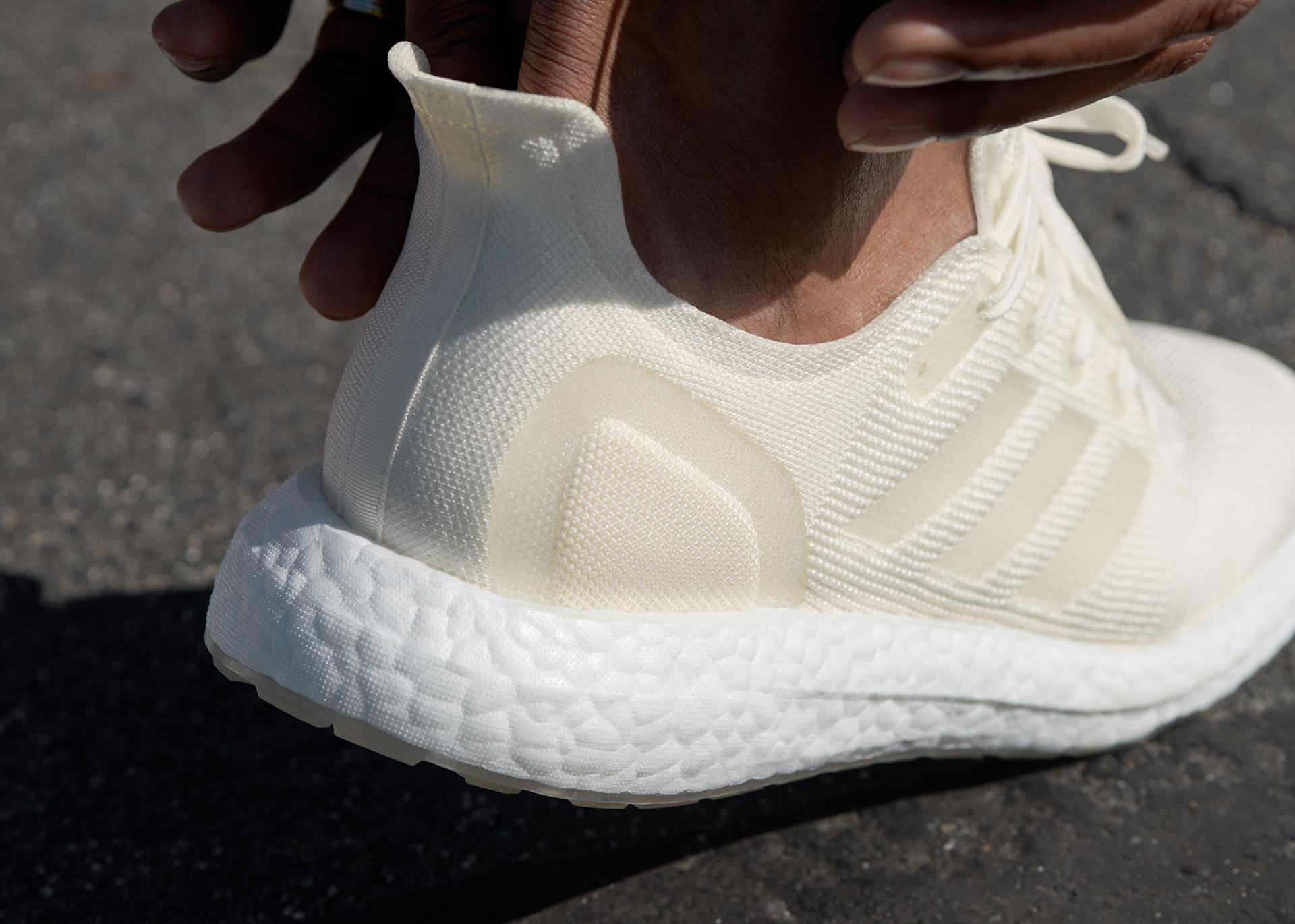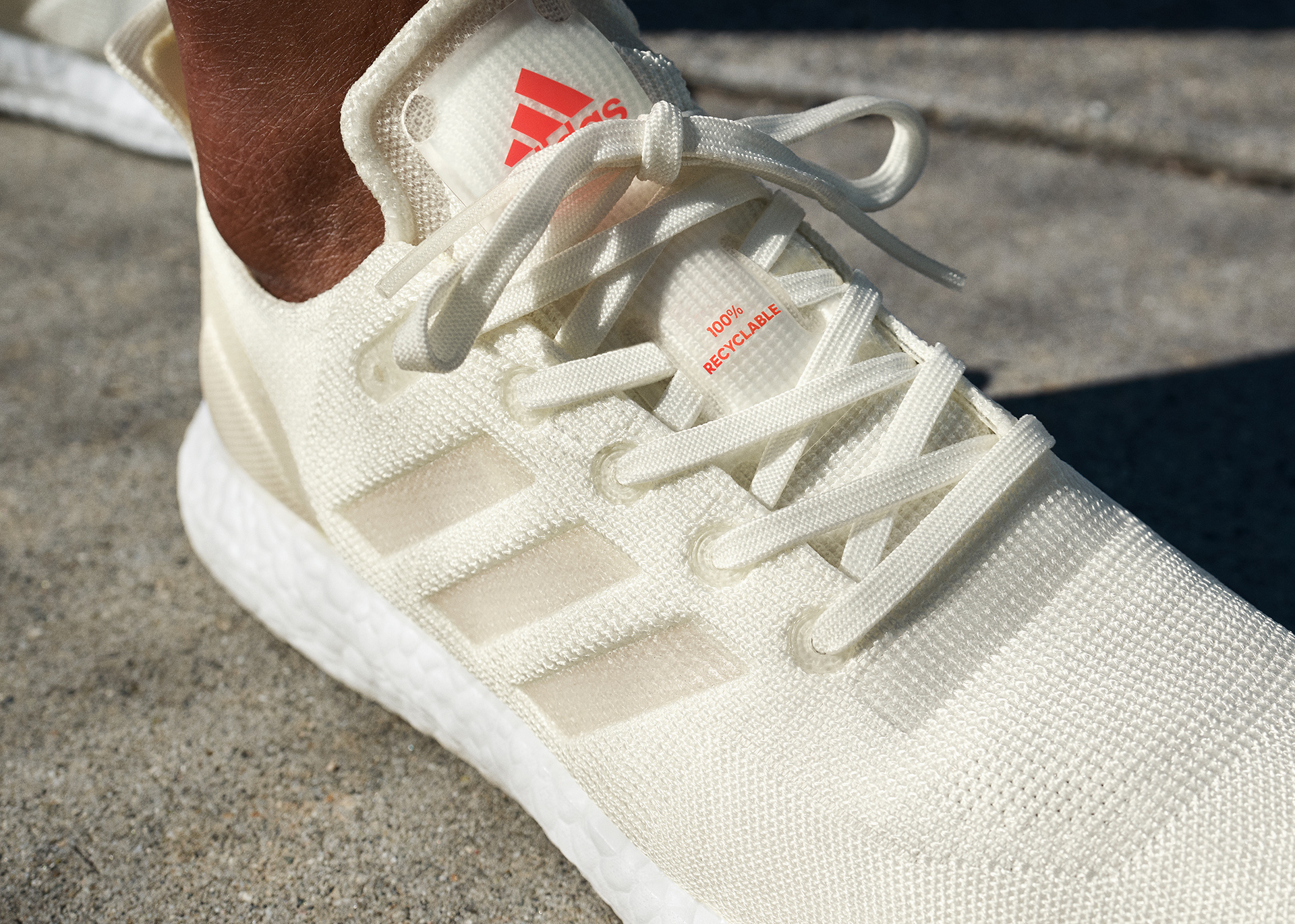Adidas is doubling down on efforts to reduce waste in its shoe-making business with the development of what it claims is the first-ever performance footwear “that’s made to be remade.” In regular speak, it’s 100% recyclable.
The Loop running shoe is the latest creation from Futurecraft, the creative hub launched by Adidas in 2015 with a focus on utilizing cutting-edge technology for innovative footwear designs.
Each component of the Futurecraft Loop is made using 100% reusable thermoplastic polyurethane developed by BASF. The highly versatile material is spun to yarn, knitted, molded, and clean-fused to a midsole at the company’s automated Speedfactory facility. The method allows glue to be entirely removed from the manufacturing process, which reduces waste and makes it easier to recycle.
Eric Liedtke, an Adidas executive board member responsible for Global Brands, said the Loop shoe demonstrates how the company wants to “take responsibility for the entire life of our product; proof that we can build high-performance running shoes that you don’t have to throw away.”
Liedtke adds that “taking plastic waste out of the system is the first step, but we can’t stop there. What happens to your shoes after you’ve worn them out? You throw them away — except there is no away. There are only landfills and incinerators and ultimately an atmosphere choked with excess carbon, or oceans filled with plastic waste. The next step is to end the concept of ‘waste’ entirely. Our dream is that you can keep wearing the same shoes over and over again.”
It may sound like a lofty ambition, but it’s in keeping with Adidas’ goal of using only recycled plastics in its manufacturing process by 2024.
Previous green efforts from Adidas include a partnership with conservation group Parley for the Oceans in 2015 to create a sports shoe made from recycled plastic bottles, bags, and nets pulled from the sea. A soccer uniform used by Manchester United has also been produced with recycled materials.
Adidas said that this year it’ll produce 11 million pairs of Parley shoes using recycled materials.
The Futurecraft Loop shoe will launch as part of a global beta program with 200 specially selected testers from around the world. The gathered feedback will be used to tweak the design of the shoe, which should hit stores in 2021.


